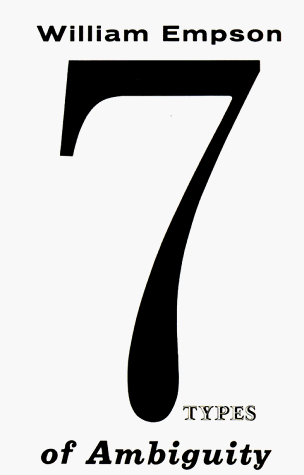Today is William Empson‘s birthday (1906-1984).
Frye in one of his notebooks on romance:
Empson’s book on ambiguity suggests, though it doesn’t explore the implications of the suggestion, that the difference between a positive & a negative idea often disappears in poetry: his example is “Drink to me only,’ which contains both the expressed postive & the logical negative of the same idea. This is connected with something I read in Vendryes’ book on language, though I noticed it myself. If in poetry you say it’s a hot day because no cool breezes [are] blowing you summon up the image of cool breezes rather than heat. “Sinless” tends to convey the idea of sin rather than innocence (wonder why there are so many “-less” words in Kubla Khan). On the other hand you can use this trick to suggest what you wish were there, & dodge overemphasis on heroic moods by descibing things negatively, as Chaucer does with the funeral of Arcite [in The Knight’s Tale]. I thought that all imaginative traditions begin by overcoming the split in the world of subject & object: the Lankavatara Sutra suggests that the real split is between being and not-being, close to Blake’s vision-analogy business, or rather Generation-Ulro, than the cloven fiction proper. Thus it speaks of those who assert that the bull has horns because they are attached to the notion that the hare has no horns–a profound and witty remark. Hence this question of positive-negative simultaneity may apply Blake’s doctrine of art to a profounder cleavage in experience that he applies it to.

